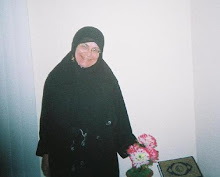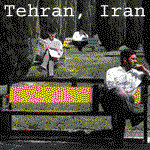The Children in Guantánamo

Original article published November 23, 2006
Yousef Mohammed Mubarak al-Shehri
Age: 21
"…they disrespected us and our religion, they threw the Koran on the floor and stripped us naked." Yousef al-Shehri
Yousef al-Shehri was 16 years old when he was detained in Afghanistan on 30 November 2001 following the US-led invasion of Afghanistan. He is believed to have been captured somewhere between Kunduz and Mazar-e-Sherif, along with a group of 120 others, by the Northern Alliance forces of General Abdul Rashid Dostum.
After his capture, Yousef al-Shehri was transported to Shiberghan prison in Afghanistan where he was held for one and a half months. He was subsequently handed over to US custody and flown to the detention centre at the US military base at Guantánamo Bay in Cuba on 16 January 2002.
Like the other Guantánamo detainees, Yousef al-Shehri was clothed in an orange jumpsuit, shackled, bound and blindfolded during the flight and then held in the wire cages of Guantánamo’s original holding facility ‘Camp X-Ray’, exposed to harsh sunlight during the day and cold temperatures at night. Little is known about Yousef al-Shehri’s current conditions of detention.
Yousef al-Shehri was detained with his cousin Abdul Salam al-Shehri, who is believed to have been 17 at the time of his capture. Abdul Salam al-Shehri was released from Guantánamo in June 2006 and transferred to Saudi Arabia.
Children in Guantánamo
"Yusuf and Adbusalaam left when they were young boys…they only lived their childhood years with the family…the memory of them remained that of their childhood years" a relative of Yousef al-Shehri
Some estimates suggest that as many as 17 detainees were taken to Guantánamo when they were under 18 years old. At least four of these, possibly more, remain held. They are Mohammed al-Gharani, a Chadian national detained in Pakistan when he was 15, Omar Khadr, a Canadian national, aged 15 when captured in Afghanistan, Hassan bin Attash, a Yemeni national, 17 when he was captured in Pakistan and Yousef al-Shehri. Another detainee, Yassar Talal ‘Abdullah Yahia al-Zahrani, from Saudi Arabia, was reportedly 17 when he was detained. He died in Guantánamo in June 2006, apparently as a result of suicide.Releasing three Afghan children from Guantánamo in January 2004, the Department of Defense stated that "as with all detainees, these juveniles were considered enemy combatants that posed a threat to US security… Age is not a determining factor in detention." The three children who were released were between the ages of 13 and 15 at the time of their detention. In their release from the base the USA was acting in terms of government policy rather than in compliance with its international legal obligations. The US determined that the "juvenile detainees no longer posed a threat to our nation, that they have no further intelligence value and that they are not going to be tried by the US government for any crimes."
Apart from the three children released in 2004, who were transferred to a separate section of the camp when details of their young age emerged, the others have been held in the same harsh conditions as adults, including prolonged solitary confinement in Camp V.
The detention and interrogation of children in Guantánamo contravened principles reflecting a broad international consensus that the vulnerabilities of under-18-year-olds require special protection. Child detainees should be kept separate from adults unless it is their best interests not to be and detention should only be used as a last resort. When detention is resorted to, Article 37 of the Convention on the Rights of the Child (CRC) states that "every child deprived of his or her liberty shall have the right to prompt access to legal and other appropriate assistance, as well as the right to challenge the legality of the deprivation of his or her liberty before a court or other competent, independent and impartial authority, and to a prompt decision on any such action." Under Article 40, if the child is alleged to have violated the law, they should be "treated in a manner consistent with the promotion of the child’s sense of dignity and worth, which reinforces the child’s respect for the human rights and fundamental freedoms of others and which takes into account the child’s age and the desirability of promoting the child’s reintegration and the child’s assuming a constructive role in society". The USA has signed the CRC and is therefore obliged under international law not to do anything that would undermine the object and purpose of the treaty pending its decision on whether to ratify it.
The USA has ratified the Optional Protocol to the CRC on the involvement of children in armed conflict. Under Article 6(3), in the case of children held because they participated in the international or non-international armed conflict in Afghanistan, the USA has an obligation to provide them with "all appropriate assistance for their physical and psychological recovery and their social reintegration". Detaining children in indefinite military custody in Guantánamo Bay cannot meet this obligation.
In 2004, the International Committee of the Red Cross (ICRC), the only organization with access to the detainees said: "The ICRC does not consider Guantánamo an appropriate place to detain juveniles. It is especially concerned about the fact that they are held away from their families and it worries about the possible psychological impact this experience could have at such an important stage in their development".
All those who were taken into custody when still children and transferred to Guantánamo are now over 18 years old. This does not alter the fact that their earlier treatment violated international principles on the treatment of children. Amnesty International believes that no one detained in Guantánamo who is charged with a crime committed when they were a child should be tried by a military tribunal.
Hunger strike
"after the first strike, they gave us promises. They said we will respect you and your religion and we will give you your rights. They promised me I would be freed…We waited but they did not deliver…" Yousef al-Shehri
During 2005 Yousef al-Shehri participated in a hunger strike at Guantánamo along with up to 200 other detainees to protest conditions of detention at the camp and their long-term indefinite detention without trial.
The detainees called a halt to their hunger strike in July 2005 after the authorities reportedly made a number of promises to the detainees to improve their conditions of detention. Yousef al-Shehri was reportedly told that he would be released in three weeks if he were to end his hunger strike.
Yousef al-Shehri was not released, and conditions at the camp did not improve. In August 2005, Yousef al-Shehri, along with many other detainees, resumed their hunger strike to protest the broken promises and, by the time his lawyers were able to visit him on 1 October, they said he was "emaciated and had lost a disturbing amount of weight…[he] was visibly weak and frail…He had difficulty speaking because of lesions in his throat that were a result of the involuntary force-feeding…"
Yousef al-Shehri told his lawyers that during this second hunger strike, after approximately seven days without food, he and four other detainees had been taken to the hospital at Guantánamo where they were verbally abused and insulted and placed in shackles or other restraints on their arms, legs, waist, chest, knees and head. After this he said they were given intravenous medicine and described how, if they moved, they were hit in the chest area. They were later force-fed. His lawyers have described how Yousef al-Shehri was forcefully administered a nasal tube for feeding, with no anaesthesia or sedative.
After two or three days he was given liquid supplement through the tube. He said that he and other prisoners were,"vomiting up substantial amounts of blood. When they vomited up blood, the soldiers mocked and cursed them, and taunted them with statements like ‘look what your religion has brought you.’"
After two weeks of force-feeding, Yousef al-Shehri and the other four men said that they were transferred from the hospital and placed in solitary cells where guards taunted them by rattling the doors of their cells, interrupting their prayers and disrupting their sleep. After five days they described being taken to a different area with foam walls and a hole in the floor for a toilet.
Here they allege that guards began inserting larger tubes into their noses, again with no anaesthesia or sedative. According to Yousef al-Shehri, when the tube was removed, blood came gushing out of him and the detainees were told by the guards that "we did this on purpose to make you stop the hunger strike."
Family
"The information in the letters was very distressing. The women and mothers cried a lot because of this. The situation was seriously mournful." A relative of Yousef al-Shehri
Yousef al-Shehri’s family thought that both he and Abdul Salam al-Shehri had died until Saudi Arabian authorities released pictures of them, confirming their detention in Guantánamo. They didn’t receive any letters from them until a year later.
In 2005, Yousef al-Shehri’s mother sent an audio tape to Guantánamo via his lawyer with her messages for him, encouraging him not to lose hope. However, authorities at Guantánamo refused to allow him to listen to the tape, stating that the message may contain hidden messages or other material.
A relative of Yousef al-Shehri told Amnesty International,
"I would like to address this message to the whole world because this prison, this place affects all human beings because it violates human rights, it does not carry out a fair trial, and there was no lawyer present during the course of arrest and interrogation. They had no visitation rights and no contact with their families through phone or otherwise…I appeal to every person, that human rights are essential regardless of what religion you practise. I appeal to the honest Americans to act now to close this place down…"
To Take Action















0 Comments:
Post a Comment
<< Home